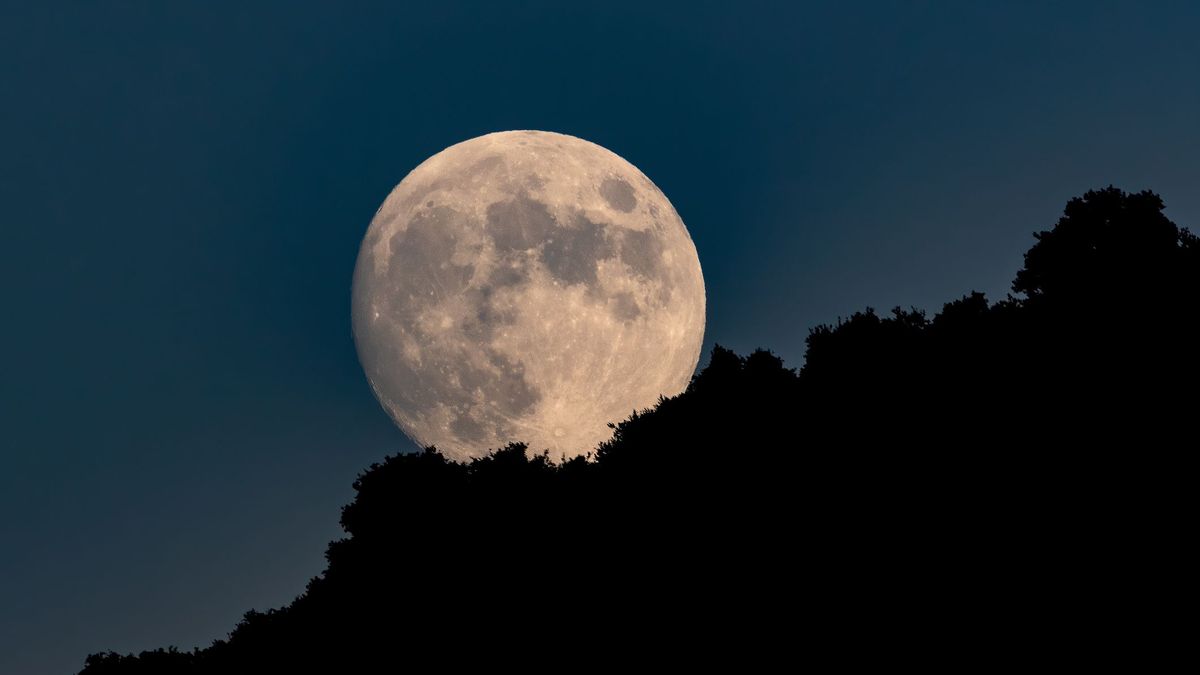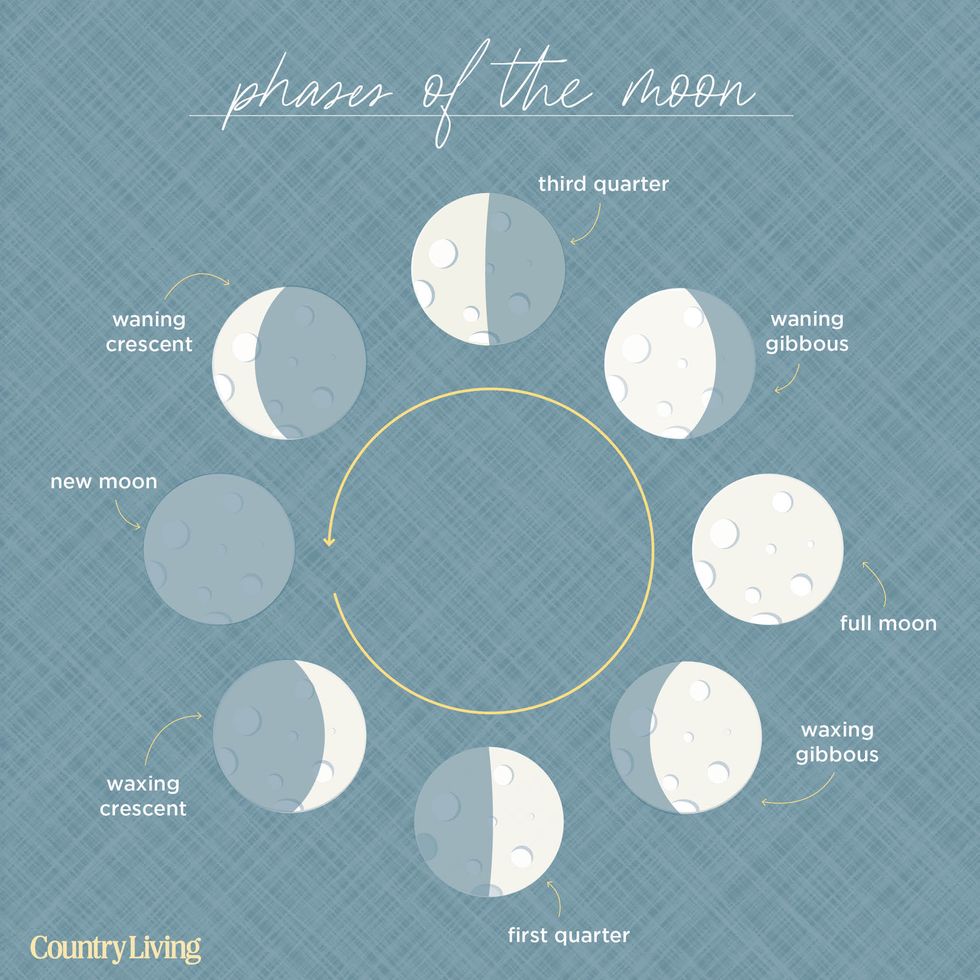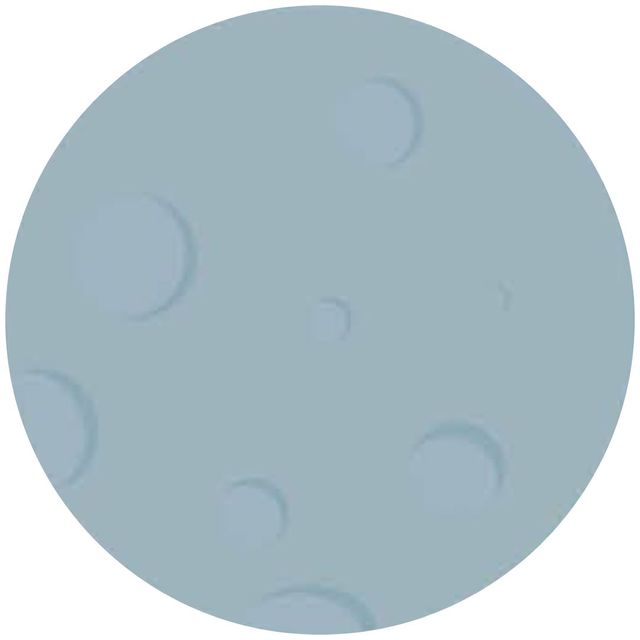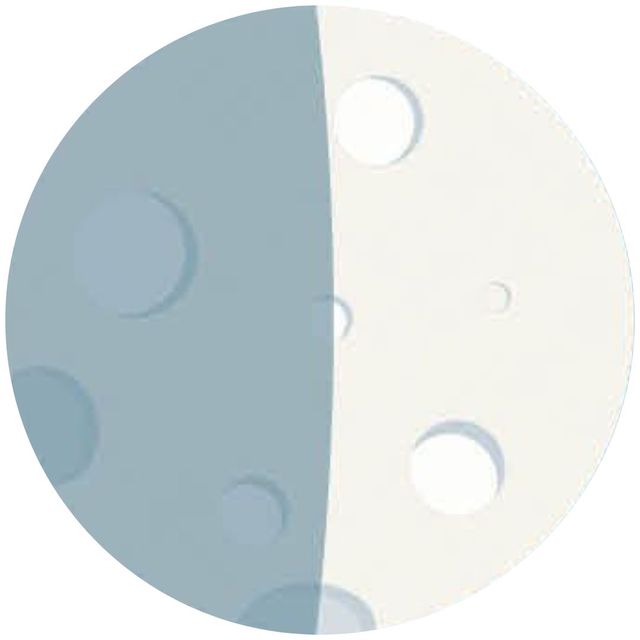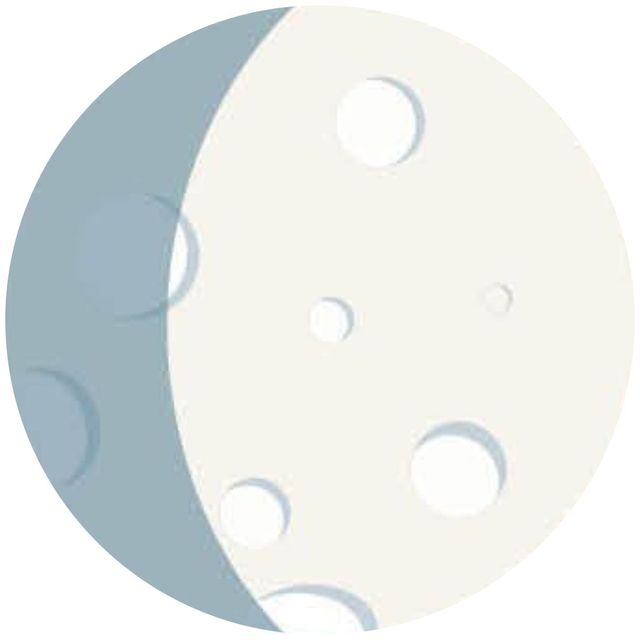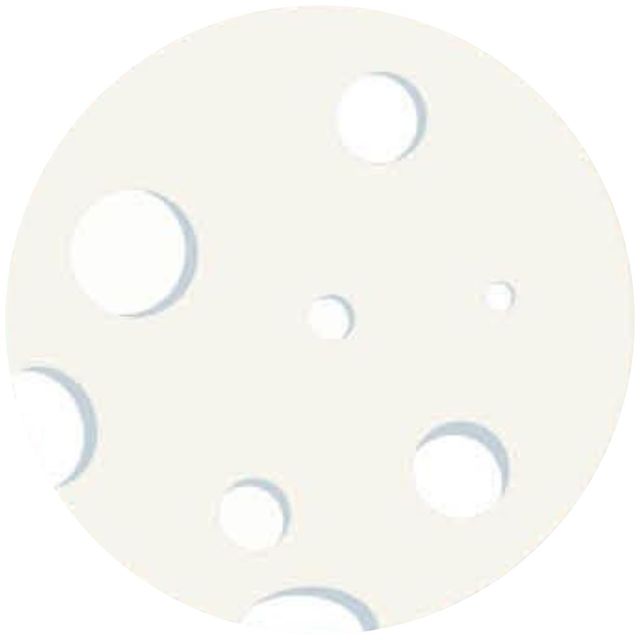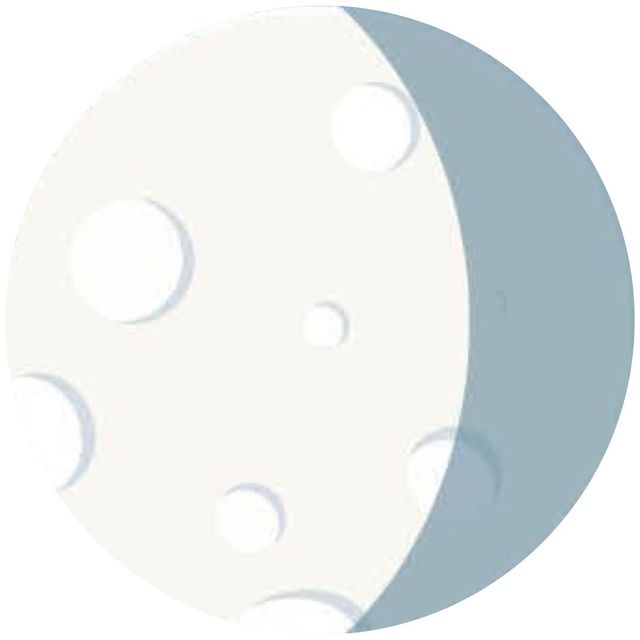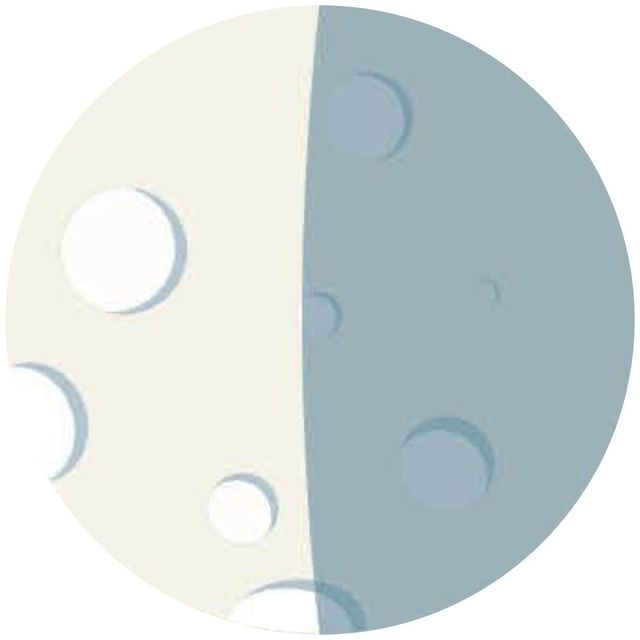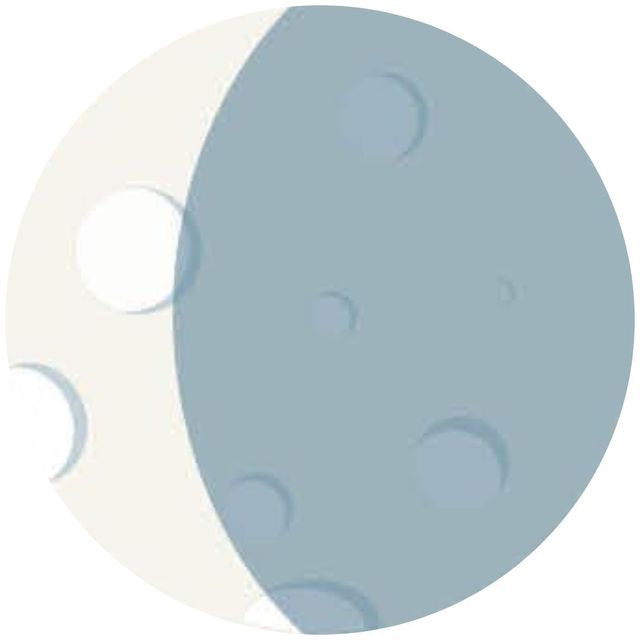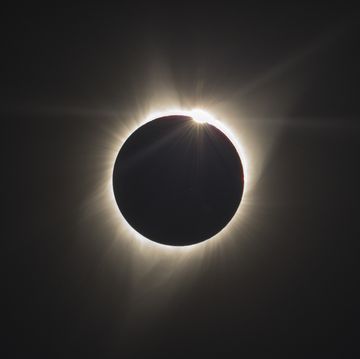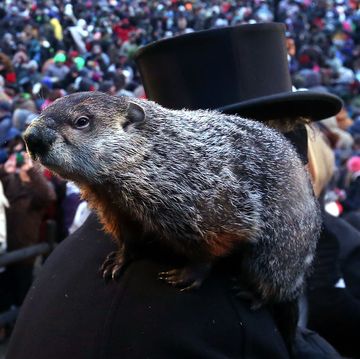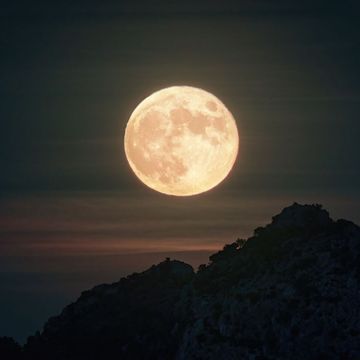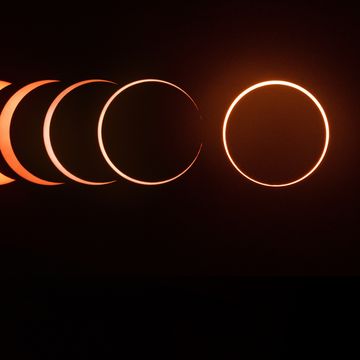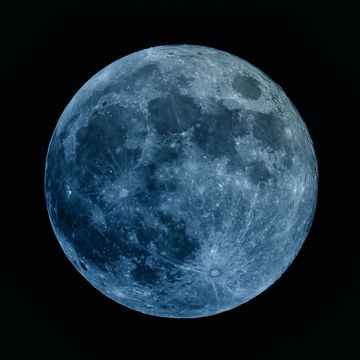How do we know when the next full moon is? We can consult an almanac, the Internet, or our handy full moon calendar, of course. But if you learn the moon phases, you can wager a pretty good guess no matter where we are in the lunar cycle just by observing the moon and doing the math.
Another plus? You'll better understand other astronomical events, such as solar eclipses, which happen only during a new moon phase, and lunar eclipses, which happen only during a full moon phase.
The first thing to understand, though, is that one side of the moon is always fully lit by the sun. What changes is how much of the illuminated portion of the moon we can see from Earth as the moon moves in its orbit. Here's your guide to the eight moon phases.
Understanding All the Moon Phases in Order… Let's Look at a Diagram!
Before we delve into each phase individually, let's take a moment to orient ourselves in the moon phases diagram below, beginning with imagining Earth at the center of this illustration and the sun adjacent to the new moon.
Think of the phases labeled "new moon," "first quarter," "full moon," and "third quarter" as the numbers 12, 9, 6, and 3 on a clock, respectively. (For those of us in the Northern Hemisphere, the moon travels in a counterclockwise orbit.) Each of these primary moon phases marks a quarter of the lunar cycle and lasts only a moment.
The remaining phases—"waxing crescent," "waxing gibbous," "waning gibbous," and "waxing gibbous"—mark the timeframes between the primary phases (don't worry, we'll define these terms soon). Each of these in-between phases lasts about 7 days and 9 hours. Altogether, the lunar cycle takes 29.5 days to complete.
When you observe the moon in the sky, ask yourself which side is aglow. Is it the right? Then you know the moon is "waxing," or progressing toward a full moon. Is it the left side? The full moon has passed. (If you happen to live in the Southern Hemisphere, heads up—those sides will be reversed.)
Now that we're oriented, let's take a closer look at each phase.
New Moon
A new moon occurs when the moon is at its closest point to the sun in its orbit around Earth. From our perspective, it's invisible because the side of the moon illuminated by the sun faces directly away from us. This means there's no moonlight reflected to Earth for us to observe.
Though you can't see it, a new moon rises and sets about the same time as the sun—which makes sense when you consider the one time you can observe a new moon: During a solar eclipse, it's a new moon that passes between Earth and the sun. (On those rare occasions, make sure you wear solar eclipse safety glasses to protect your eyes.)
Waxing Crescent
After the new moon, the moon enters the waxing crescent phase. Crescent refers to the shape (like a crescent roll!), while waxing means "increasing." Over about a week's time, the moon's illuminated portion grows from a sliver to nearly a half circle. If you are in the Northern Hemisphere, the right side of the moon will be illuminated. If you are in the Southern Hemisphere, your perspective will be reversed—it will be the left side that's lit.
First Quarter
The moon looks half full at this stage, so what's with the name? Here, the term simply means that the moon is one-fourth of the way through the lunar cycle. Like a new moon, the first quarter designation marks a precise moment. If you drew a line from the Earth to the sun and another from the Earth to the moon, those lines would be perpendicular.
Waxing Gibbous
During the waxing gibbous moon phase, the illuminated portion of the moon in still "waxing" or increasing. The word "gibbous," derived from the Latin word for "hump," refers to the convex shape. Over about a week's time, this phase marks the progression from a first quarter moon to a full moon.
Full Moon
Halfway through the lunar cycle, a full moon occurs. The moon is at its farthest point from the sun in its orbit, and the side of the moon facing Earth appears as a perfectly round disk. Whereas a new moon rises and sets in tandem with the sun, the opposite is true for a full moon, which lights the night from around sunset to sunrise (this is especially true for the harvest moon that falls near the autumn equinox, a time when day and night are about equal in length).
Occasionally, the sun, Earth, and moon align during a full moon. The result is a lunar eclipse, also called a blood moon for the reddish shadow the Earth casts on the moon. And if two full moons occur within a calendar month, which happens every so often, the second one is a called a blue moon.
If you notice a full moon looking extra large, it might be a supermoon, which happens when the full moon is at its closest point to Earth in its orbit. Or it might be an illusion if you are gazing upon a full moon that's close to the horizon.
A full moon peaks at a precise time, though it can appear full for two to three days. If you glimpse a "full moon" just before or after its peak time, you are actually observing a nearly full moon in one of the gibbous phases, whether waxing or waning.
Waning Gibbous
To "wane" means to diminish. As the moon moves into this phase, the illuminated portion appears to shrink as the moon circles back toward the sun. The shape of a waning gibbous is the same as that of waxing gibbous, so how can you tell the difference? In the Northern Hemisphere, it's the left side of the moon that's lit when it's waning. (In the Southern Hemisphere, a waning moon appears lit on the right side.)
Third Quarter
A third quarter moon looks a lot like a first quarter moon—both appear as a half circle to our eye. But, again, you can tell the difference by which side of the moon is illuminated (the left for the Northern Hemisphere). At this moment, the moon is now three-quarters of the way through its lunar cycle—hence the name "third quarter." It is also sometimes called a "last quarter" moon, simply meaning that it's entering the last quarter of its cycle.
Waning Crescent
That crescent roll shape is back, except now it's shrinking. As the moon travels back to its closest point to the sun, the lit portion that we can see gets smaller each day. Finally, it's only a sliver, and when it disappears from our view, it's a new moon and the cycle begins again.

Terri Robertson is the Senior Editor, Digital, at Country Living, where she shares her lifelong love of homes, gardens, down-home cooking, and antiques.
